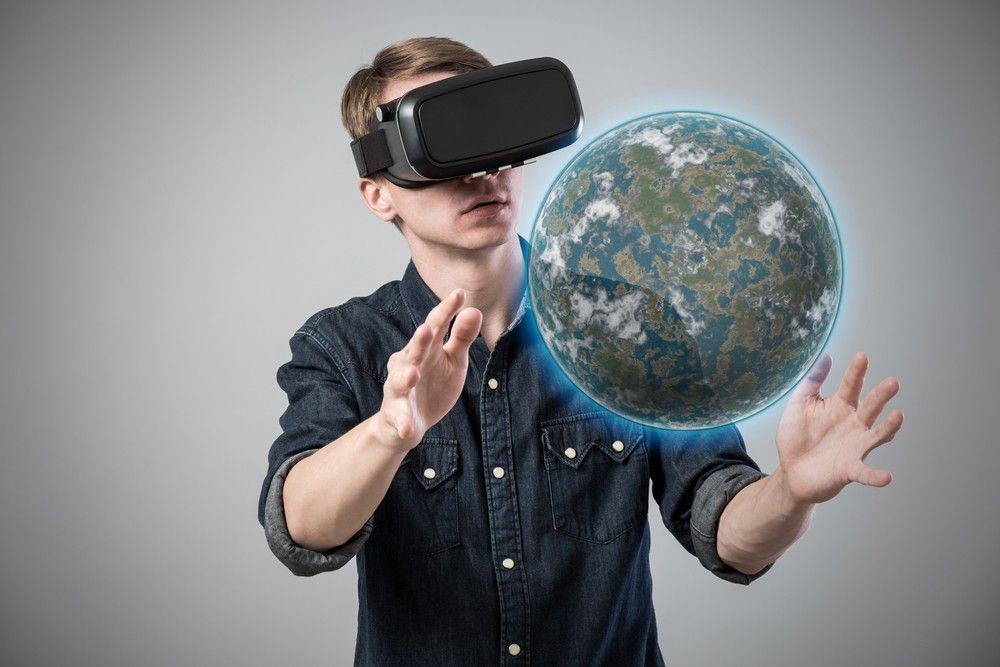Viarama
Eye Opening Education

By Billy Agnew, Director of Viarama.
Viarama began in 2015 and was created to use the powerful technology of VR as a force for good in our communities. We work to improve the quality of life among school children, senior citizens, and 18-to-24 year olds. We train and employ the latter group to take VR into mainly schools, nursing homes, hospices, and hospitals. Everywhere we work we see the positive effect VR has immediately on those who experience it, and often the reaction is profoundly moving. In nursing homes for example we allow people to draw or paint again, climb a mountain, fly a plane, or do whichever one of the many things we offer.
One recent example which we caught on camera (and which is available on our social media channels) was a lady called Linda who for her whole life had wanted to see Mount Everest. Linda suffers from MS and is unable to travel, and when we let her see that amazing view from the top of Mount Everest she had to stop as she was crying tears of joy. Incredibly, we see that response regularly and it is moments like these that keep you going through the tough times that are inevitable when you start a new social enterprise in a new sector!
VR as a tool for educators is unparalleled in its effectiveness. Biology students can go inside the human body and see the heart six-feet-tall in front of them. Geography students can go anywhere in the world without leaving their classrooms. Engineers can see their prototypes come to life in real-time, and to scale. Interest in STEM subjects is hugely stimulated by experiencing VR and students find they learn much quicker, and retain much more information than with established methods.
We’ve had so many fantastic experiences such as pupils experiencing the blitz first hand while crammed inside a London tube Station, holding flaming torches up to ancient Egyptian hieroglyphics to have them translated in real time, artists able to pre-visualise sculptures and adjust their work on the fly, and budding architects able to walk around their buildings before they are built.
We regularly see amazing responses to educational VR experiences, but perhaps the most rewarding have been from special needs pupils, particularly with developmental disorders such as Asperger Syndrome and Autism. VR is able to capture the attention among sufferers of these two conditions in a very effective way, allowing the user to quickly become more calm, relaxed, and focused. To witness the calming effect our work has on these kids has been truly wonderful. This is an area which requires research and we are taking steps to prove the efficacy of the technology in a variety of settings currently, in conjunction with Edinburgh Queen Margaret University, and others. We are always open to more collaboration!
In a few parts of the world whole classes are experiencing room-scale VR at the same time, with China arguably in the lead in this field. We would like to see more schools in Scotland adopting this technology for the benefit of their pupils. Viarama is at the forefront of this movement in this country and we seek private and public support to prevent our country’s schools and pupils from falling further behind the rest of the world. It’s frustrating to see finance in particular be a barrier to allowing our kids to experience VR in greater numbers, and while we have worked with many under-resourced schools completely free of charge, we do need funding to allow us to increase and develop our work across Scotland.
Viarama uses HTC Vive systems, which give the best virtual reality experience available in the world today. This system allows users to move around in their virtual world while being perfectly tracked by two infrared sensors. We custom built all of the very powerful PCs we use to save money, and the end result is an unforgettable experience.

I encounter scepticism that the experience may be a gimmick on a daily basis - people have had their hopes raised and quickly dashed by technology on so many occasions, and I myself was sceptical prior to my first experience. That’s one reason why it’s so amazing to see people’s reactions to trying VR with Viarama for the first time - they’re like kids again! It’s taken more than fifty years for technology to be able to deliver on the promise of VR and that is the main reason for the boom in interest in the sector.
The single greatest challenge we face is a lack of understanding of the staggering quality of the high-end virtual reality we use. The main difficulty we encounter is that describing the experience cannot possibly convey what it is actually like. We are changing minds however, albeit slower than we would wish for, but every day we convert sceptics into believers and we’re delighted to do so.
At Viarama we aim to work with every public & private school & nursing home in Scotland, training and employing more and more young people at above the living wage in the process.
Yes, this is a hugely ambitious target, but it is one we believe can be achieved with the right support from local and national government, combined with public and private funding. This year we have been shortlisted for the social enterprise of the year awards in both Scotland and the UK. We are of course immensely proud of this recognition, especially if it will take us a step closer to achieving our aims.
With thanks to Billy Agnew Director of Viarama
Create an event with world changing ideas: Conventionscotland.com | legends@visitscotland.com